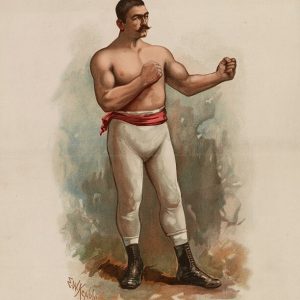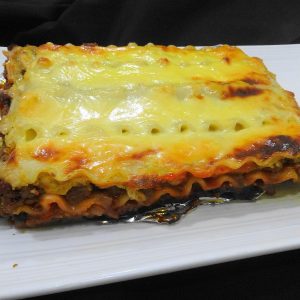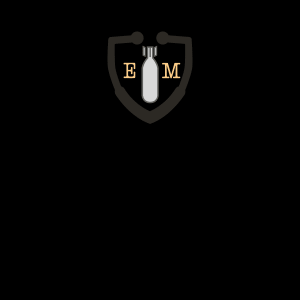Want to experience the greatest in board studying? Check out our interactive question bank podcast- the FIRST of its kind here: emrapidbombs.supercast.com
Author: Blake Briggs, MD
Objectives: define the different classifications of A fib, its pathophysiology, causes, EKG interpretation and diagnosis, as well as management both of RVR and discussion about cardioversion.
Introduction: “A fib”, the most recognizable, most common sustained dysrhythmia in the world, can actually be quite murky at times to manage. Incidence is increasing, and ¼ of those >40 years old have a risk of developing it.
Variants of A fib:
-Paroxsymal: intermittent. Rhythm either spontaneously converts or within days of onset of treatment.
-Persistent: does not terminate within 7 days.
-Permanent: determined by physician and patient; rhythm will not likely convert and therefore rhythm conversion is abandoned, and chronic management is adopted.
Pathophysiology: how exactly A fib develops is still poorly understood, but in brief the cause is some initiating focal atrial activity in the setting of atrial stress (see mnemonic below). After that inciting event, there needs to be some “maintenance” stress level on the atrium which causes the abnormal rhythm to continue. The most common location for A fib is originating in the roots of the pulmonary veins and left atrium. Left atrial dilation appears to be the biggest risk factor.
End game of A fib: decreased cardiac output due to decreased atrial filling of ventricles. Higher risk of thromboembolic disease due to ventricular stasis and inflammation causing a hypercoagulable state (2/3 Virchow Triad).
Accelerate your learning with our EM Question Bank Podcast
- Rapid learning
- Interactive questions and answers
- new episodes every week
- Become a valuable supporter
Causes of A fib (this list is not exhaustive but gets you thinking!)
Surgery (Post-op from cardiac surgery)
Atherosclerotic heart disease
Drugs- in particular sympathomimetics (amphetamines, cocaine, dobutamine, dopamine, etc)
Alcohol (form of holiday heart syndrome)
Thyrotoxicosis
Regurgitation or stenosis of Mitral valve (e.g. Rheumatic heart disease)
Ischemia (PE, pulmonary hypertension, hypovolemia, any shock)
Atrial tumors (myxoma)
Initial evaluation: if it’s the first time the patient is presenting with it, ask about the onset, frequency, duration, and other qualitative characteristics and pertinent positives and negatives.
Physical exam should focus not only on cardiac auscultation but peripheral pulses, signs of volume overload or cardiac strain such as JVD. Point of care ultrasound should also be considered in select situations.
Other labs to consider: TSH and Free T4, CXR, BMP for electrolytes, CBC for anemia, etc.
Diagnosis: EKG. Everyone knows the rhythm is irregularly irregular with no p waves. Here’s what else can help you approach the EKG.
-QRS <120 ms unless there is a bundle branch block.
-Fibrillatory waves can mimic p waves but are of variable morphology and amplitude.
-Ashman aberrancy: QRS complexes can take on a weird morphology (kind of like RBBB). These follow after a long and then a short RR interval. Long RR interval with regular QRS à short RR interval with regular QRS à weird third QRS/aberrant beat.
“Rapid ventricular response” is a term assigned to those with A fib with HR consistently >100. The causes of A fib with RVR are many and difficult to list here. The treatment, however, is important and discussed further below.
“Slow” AF is HR <60. Here’s a free pearl to remember: the causes of this are quite intuitive and are causes of “bradycardia” in other situations as well: hypothermia, digoxin toxicity, withdrawal from any sympathomimetic, overdose on CCB or B-blocker, sick sinus syndrome.
Why “A fib with RVR” is not cool and why we need to treat it:
A fib with RVR occurs when >400 atrial beats travel to the AV node and there is a correspondingly rapid (you guessed it) ventricular response. The ventricle obviously does not see >400 bpm thanks to the AV node’s slow conduction speed. The usual spectrum of irregular HR is 100-180 bpm.
This is a common ED issue and a reason for these patients to present to your department!
What A fib with RVR does to the body:
-hemodynamic instability —> drop in CO —> decrease in MAP —> end-organ damage
-eventual development of cardiomyopathy (arrhythmia-induced cardiomyopathy is a thing and A fib is a major contributor to advancing heart failure with poor LVEF. In fact, ~40% of patients with A fib have some degree of impaired LVEF).
How to treat: PO vs IV vs electricity. Think of these on a spectrum.
The whole point is to reduce AV node conduction and therefore the ventricular response rate.
-Nonurgent therapy: mild to no symptoms. PO therapy preferred.
-Urgent therapy: Moderate symptoms. IV preferred.
-Emergency therapy: Unstable (hypotensive, AMS). IV therapy or direct cardioversion at 200J.
Here’s another free pearl: encountering rates of A fib with RVR > 200 bpm suggests the following: catecholamine storm, hyperthyroidism, or some reentrant accessory pathway may be present.
Rate vs rhythm control
Multiple large studies have failed to confer advantage to rhythm control strategy (e.g. RACE, AFFIRM, plus others).
As a result, rate control strategy is now preferred in most patients.
Rate Control options
Metoprolol: IV given as 5mg every 5 minute up to 15mg total.
Esmolol: bolus of 0.5 mg/kg over 1 minute followed by maintenance rate of 50 ug/kg per min up to 200.
Propanolol is also an option.
*B-blockers are preferred in those with systolic heart failure (decreases cardiac remodeling).
Verapamil: profound negative inotropic effects.
Diltiazem: less negative inotropic effect than Verapamil. Once rate is achieved, infusion should be started, or else ventricular response is lost.
*CCBs should be avoided in those with severe systolic CHF and hypotension. Diltiazem is preferred due to less negative inotropic effects.
What about Digoxin?
-Reserved for those who cannot be controlled by b-blockers or CCBs. Differing literature on whether digoxin increases all-cause mortality, but who cares. You should probably not be giving this drug without cardiology consultation first because that is who these patients will see soon. Even then, the effects from digoxin are not immediately witnessed and there are a multitude of contraindications and warnings.
Amiodarone: Very unlikely to cause hypotension which is nice, and it promptly slows ventricular rate within 8 hours. Only a second line agent given its multitude of long-term side effects. Be extremely cautious as this can worsen those with preexcitation!
Mag-sulfate: modest improvement in HR. Can cause profound hypotension and flushing. Limited, weak studies on this therapy and we usually don’t go for it.
Eventual disposition for stable A fib patients. To convert or not to convert?
For most persistent and all permanent A fib: no cardioversion. We just “tolerate” their A fib with rate or rhythm control.
As stated above, rate control is not inferior to rhythm control. There is actually a higher risk of torsades and hospitalizations in rhythm control patients. However, all the patients in those studies were >65 and not on anticoagulation. So, these assumptions should not apply to younger patients. In general, rate control is preferred.
Predictors of unsuccessful cardioversion: A fib >1-year, severe left atrial dilation, failed prior cardioversion, underlying problem has not been addressed.
Anticoagulation prior to cardioversion has been another hotly debated topic in literature. Let’s try to sum it up as of this writing.
-Patients with A fib <48 hour duration and minimal other risk factors (CHF, <60, DM) can safely undergo ED cardioversion and be discharged. Heparin should be started if plans to cardiovert within 6 hours or NOAC for 6 hours and then cardiovert. After cardioversion, NOAC therapy for 4 weeks minimum for all patients.
-Patients with A fib >48 hours duration require anticoagulation for at least 3 weeks with a TEE prior to cardioversion.
When it comes to cardioversion, we have 2 options: chemical vs electrical.
-chemical (procainamide preferred; flecainide or propafenone if no existing heart disease; Amiodarone if heart disease)
-electrical (more successful overall).
Summary of A fib patient cardioversion dispositions:
-paroxysmal: cardiovert in the ED young patients with no risk factors. Send home with NOAC.
-persistent: case by case. Usually rate control is selected. Never forget to ensure proper cardioversion.
-permanent: never cardiovert. Never forget to ensure proper anticoagulation if it applies!
Who is going home with anticoagulation?
Another great topic is the patients with active A fib who (assuming no cardioversion has occurred) will be going home with their A fib still present to whatever degree it occurs.
CHADS2-VASC should be performed and clinical decision tailored to each patient.
NOACs are preferred for a multitude of reasons but beyond the scope of this document. Warfarin is preferred in those with valvular heart disease (NOACs have not been studied in these patients yet).
References:
1. Airaksinen KE, Gronberg T, Nuotio I, et al. Thromboembolic complications after cardioversion of acute atrial fibrillation: the FinCV (FinnishCardioVersion) study. J Am Coll Cardiol 2013; 62 (13): 1187-92.
2. Albers GW, Amarenco P, Easton JD, et al. Antithrombotic and thrombolytic therapy for ischemic stroke. The seventh ACCP conference on antithrombotic and thrombolytic therapy. Chest 2004; 126: 483S-S128.
3. Al-Zaiti SS. Inflammation-induced atrial fibrillation: Pathophysiological perspectives and clinical implications. Heart Lung 2015; 44(1): 59-62.
4. Atzema CL, Barrett TW. Managing atrial fibrillation. Ann Emerg Med 2015; 65: 532-39.
Camm AJ, Kirchhof P, Lip GY, et al. Guidelines for the management of atrial fibrillation. Eur Heart J 2010; ehq278.
5. Camm AJ, Savelieva I, Lip GY. Rate control in the medical management of atrial fibrillation. Heart 2007; 93 (1): 35-38.
6. de Denus S, Sanoski CA, Carlsson J, et al. Rate vs rhythm control in patients with atrial fibrillation: a meta-analysis. Arch Intern Med 2005; 165 (3): 258-62.
7. Fromm C, Suau SJ, Cohen V, et al. Diltiazem vs Metoprolol in the management of atrial fibrillation or flutter with rapid ventricular rate in the emergency department. J Emerg Med 2015; 49 (2): 175-82.
8. Hamilton A, Clark D, Gray A, et al. The epidemiology and management of recent-onset atrial fibrillation and flutter presenting to the emergency department. Eur J Emerg Med 2015; 22 (3): 155-61.2
9. Martindale JL, Silverberg M, Freedman J, et al. β-Blockers versus calcium channel blockers for acute rate control of atrial fibrillation with rapid ventricular response: a systematic review. Eur J Emerg Med 2015; 22 (3): 150-54.
10. Nuotio I, Hartikainen JE, Gronberg T, et al. Time to cardioversion for acute atrial fibrillation and thromboembolic complications. JAMA 2014; 312 (6): 647-49.
11. Stiell IG, Clement CM, Brison RJ, et al. Variation in management of recent-onset atrial fibrillation and flutter among academic hospital emergency departments. Ann Emerg Med 2011; 57 (1): 13-21.
12. Van Gelder IC, Hagens VE, Bosker HA, et al. A comparison of rate control and rhythm control in patients with recurrent persistent atrial fibrillation. N Engl J Med 2002; 347 (23): 1834-40.
13. Wolf, PA, Abbott RD, Kannel WB. Atrial fibrillation as an independent risk factor for stroke: the Framingham study. Stroke 1991; 2: 983-88.
14. Wyse DG, Waldo AL, DiMarco JP, et al. A comparison of rate control and rhythm control in patients with atrial fibrillation. N Engl J Med 2002; 347 (23): 1825-33.



